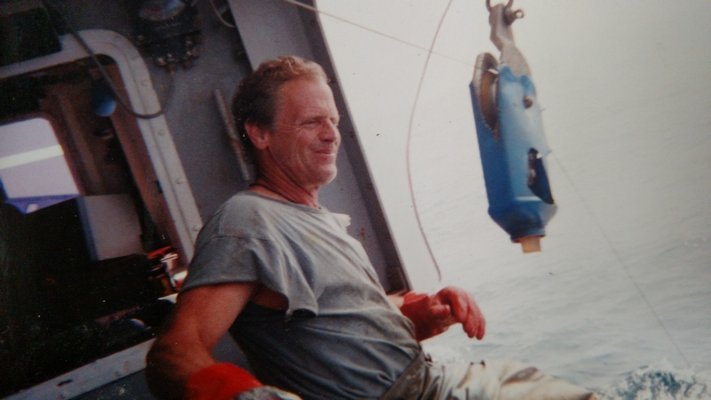
Montauk resident David Krusa, a commercial fisherman and one of the pioneers of the local tilefish fishery, died this past week. He was 75.
Mr. Krusa and his longtime fishing partner, John Nolan, were the first captains in Montauk and among the first on the East Coast to exclusively target tilefish, a golden-skinned species that inhabits the ocean bottom near the edge of the continental shelf and now supports a multimillion-dollar industry.
After a battle with lymphoma in the 1990s forced him to give up his career on the water, Mr. Krusa turned to woodworking and writing poetry and short stories to exercise his boundless mental and physical energy. His works were featured frequently in the East Hampton Star and also in the anthology “On Montauk.”
Mr. Krusa was born on September 30, 1941, in St. Louis. When he was just 3 years old his father was killed in a plane crash and his mother moved the family back to her native Long Island.
Mr. Krusa grew up on the waters of Long Island Sound in a sailing family and by high school had set to harvesting fish and shellfish to earn money. He left for stints at college, first to study engineering at the Colorado School of Mines, then the University of Washington, then a writing program at Columbia University. But college couldn’t focus Mr. Krusa’s attention.
“The fishing industry always distracted him,” his wife, Stephanie Krusa, said. “He was always studying it, always thinking about what the state of the fishery was and how he could improve it.”
In his early 20s he wandered around the world’s fisheries. He fished for shrimp in French Guiana and for halibut in Alaska, returning to Northport to dig clams to replenish funds between sojourns.
During one of his home stints he met Stephanie King, the sister of fellow fisherman. He was 24 and she was 22 when they married in 1967.
After spending a few years on extended cross-country road trips—first to Mexico and then to Alaska, where Mr. Krusa discovered longline fishing—the young couple, by then expecting their first son, returned to Northport and Mr. Krusa set about starting a career as a commercial fisherman.
In 1971 he and Mr. Nolan, who also worked as a bayman in Northport, purchased their first boat together, and Mr. Krusa moved his young family to Montauk, where the boat was to be based.
For six years they fished for lobsters and made good livings, Mr. Nolan said, but were in search of something that could expand their business. After discovering the fledgling tilefish fishery while crewing on another boat, the pair converted their lobster boat for deploying and hauling tub gear for finfish on the same grounds where they had been dropping pots for lobsters.
The pair built and operated several longline boats over the years, growing a robust business that Mr. Nolan still runs. Only illness forced Mr. Krusa to withdraw from fishing.
“He had a deep love for the people he worked with—his favorite times were with those characters,” his son Lee Krusa said. “Fishermen are often people who don’t fit into other career environments. My father grew up without a father and had to find his own path and we wanted to encourage those who didn’t have a place in the world. He shared his knowledge and he led by example. He knew you couldn’t pass judgment without understanding where they’d come from.”
Mr. Krusa died of heart failure on January 4, his family said.
In addition to his wife, Mr. Krusa is survived by two sons, Kip, of Tennessee, and Lee, of California, a daughter, Margaret McKinnon, of Texas, and a brother, Christopher, of Illinois.
Services were held last weekend and Mr. Krusa’s ashes will be scattered at sea. In lieu of flowers the family has asked for memorial donations to the East End Foundation or the Montauk Fire Department Ambulance Company.